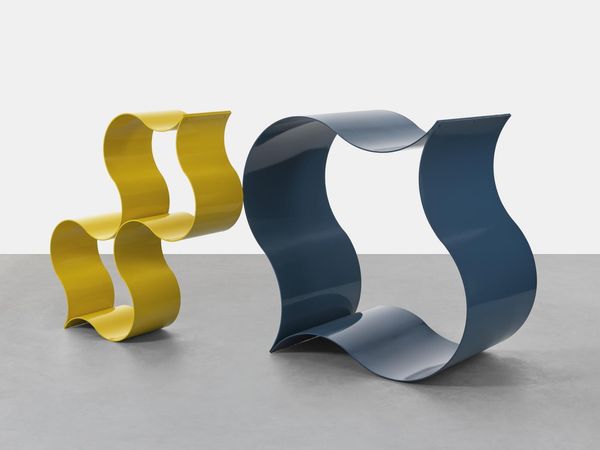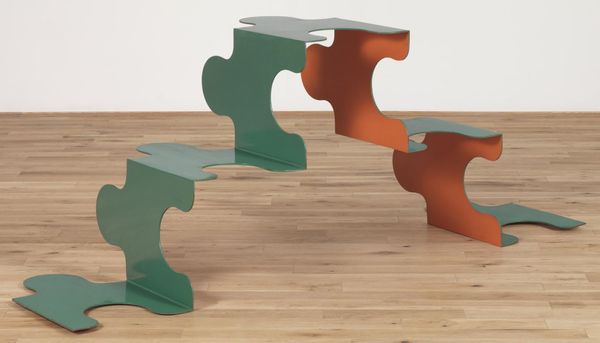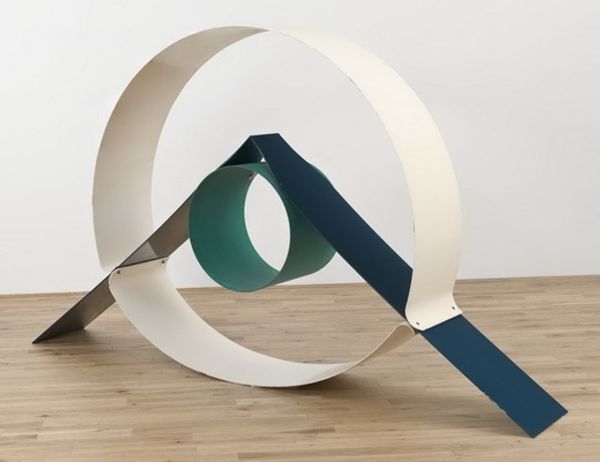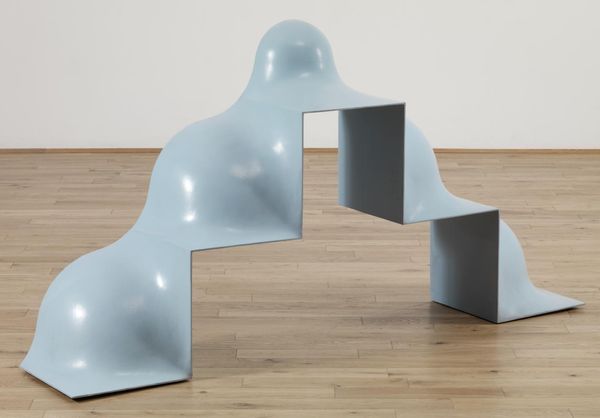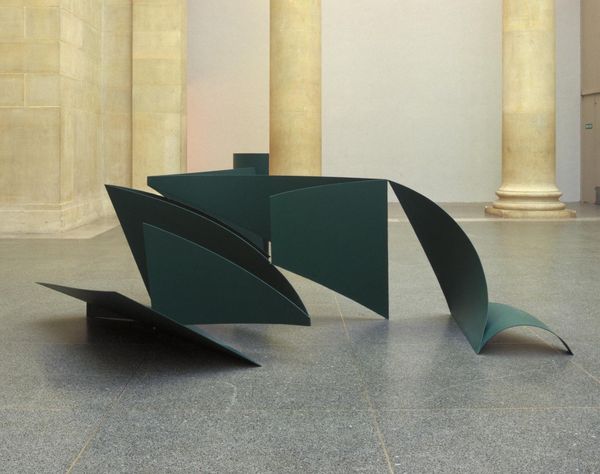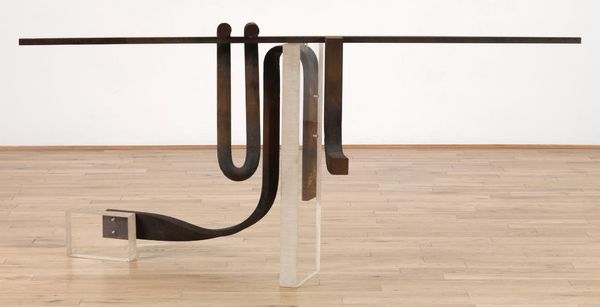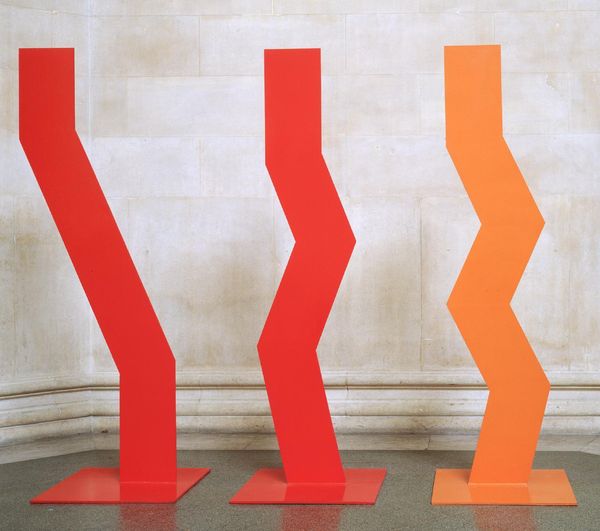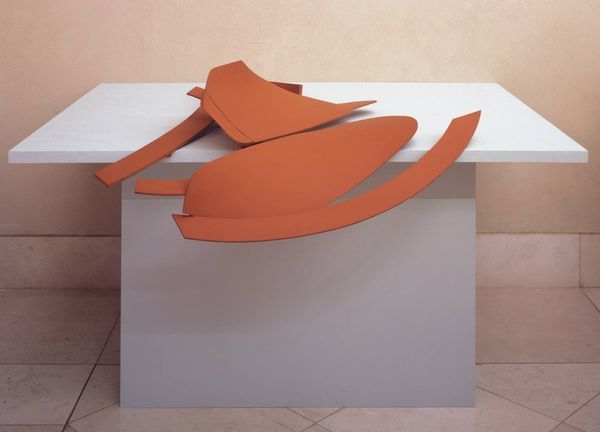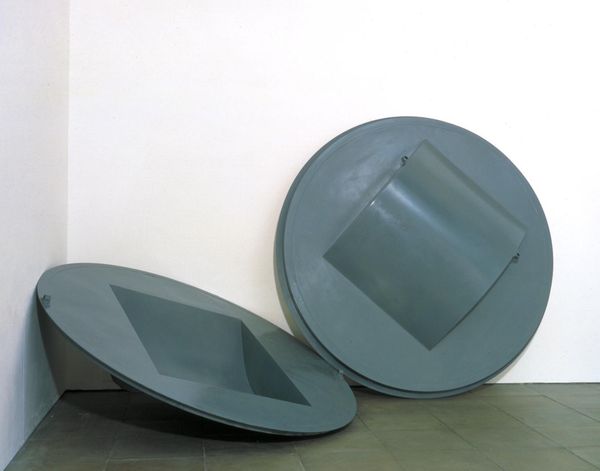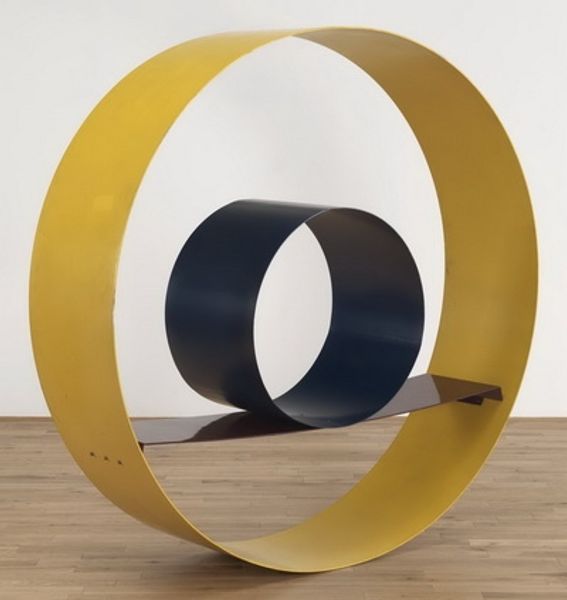
metal, sculpture
#
metal
#
constructivism
#
form
#
geometric
#
sculpture
#
abstraction
#
line
Copyright: David Annesley,Fair Use
Curator: Welcome. Here we have David Annesley's "Loquat," crafted in 1965. The artwork resides here at the Tate Modern. Editor: What immediately strikes me is the playfulness of form. The vibrant yellow and blue painted metal curves undulate, almost like oversized ribbons frozen mid-dance. Curator: Precisely. Annesley, part of the British Constructivist movement, really emphasized the power of pure geometric form. The piece is steel, shaped and painted, seemingly defying gravity through its flowing lines. These artists really challenged what sculpture could be. It wasn't always about representational form. Editor: Definitely. But isn’t there also an element of social commentary? Remember the '60s—a period ripe with questioning norms. Could "Loquat" be viewed as an exploration into societal constraints through malleable materials, maybe suggesting possibilities beyond restriction? Curator: That’s a very insightful interpretation. Constructivism, as a movement, originated from utopian ideals intending to merge art with industry, creating objects for public use. While "Loquat" may not be directly functional, it invites the public to interact with abstract art. It transforms the gallery space into a social space for dialogue and contemplation, an artistic contribution accessible beyond elite circles. Editor: Yes, and the stark contrast between colors evokes such emotion, with the sculpture's curves forming what resembles almost letterforms – adding further depth to interpretation. Are these deliberate metaphors by Annesley himself intended to address more personal stories about societal constructs? Curator: It could be. But the title "Loquat" leads us to believe Annesley probably had the fruit or similar shapes in mind while designing the artwork. The challenge in abstract art, though, is that definitive meaning is left open for interpretation and debate. It becomes an exercise for us, even now, in 2024, to determine that meaning and debate artistic intent and impact. Editor: In the end, isn't that what all art is about? Curator: Perhaps, opening the opportunity to broaden and shape dialogues for current and future viewers through cultural commentary.
Comments
No comments
Be the first to comment and join the conversation on the ultimate creative platform.

